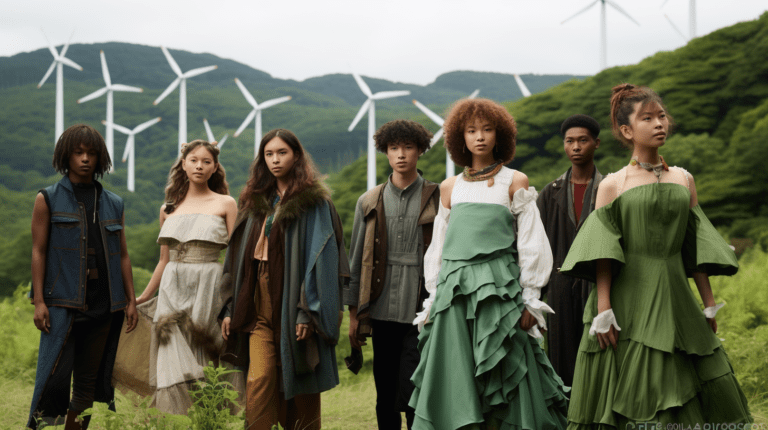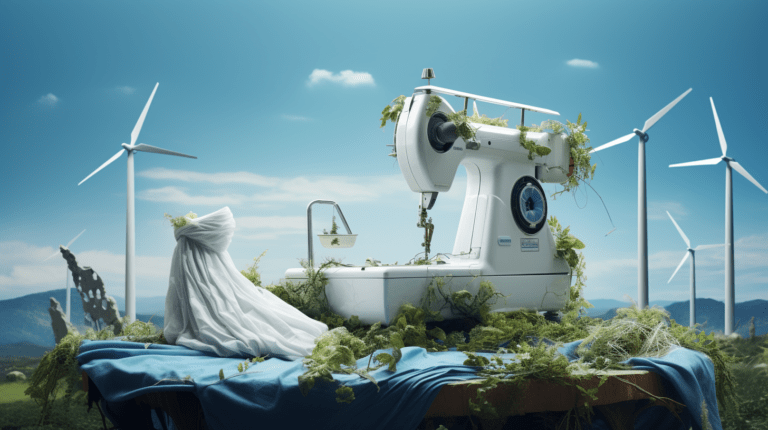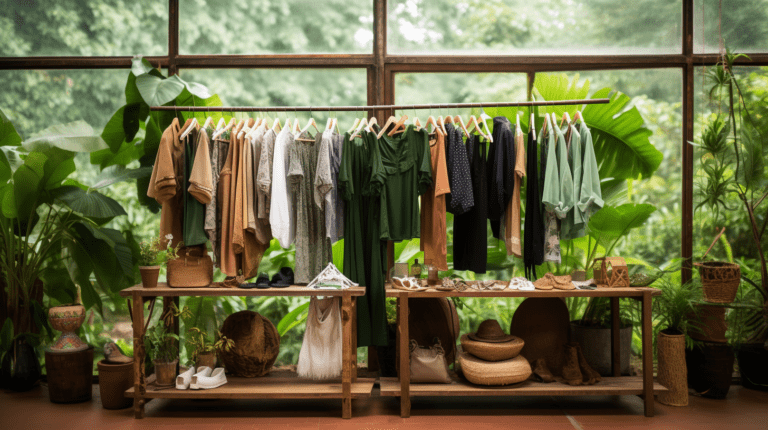Sustainable Fashion Statistics – Imagine strutting down a runway of the future in an outfit crafted from yesterday’s waste. Welcome to sustainable fashion, where style doesn’t have to come at the planet’s expense.
As you’re about to discover, this is more than just a fleeting trend; it’s a powerful testament to how we can revolutionize our wardrobes and the world. You’ll learn about the burgeoning growth of this market, its environmental and social impacts, as well as challenges faced along the way.
You’ll get an insight into innovative practices that make fashion sustainable and successful case studies that are leading by example. So gear up for a deep dive into sustainable fashion statistics that will enlighten you on how your sartorial choices can make you not just look good, but feel good about their effects on our environment too.
Because when it comes to power dressing, nothing speaks louder than sustainability.
Key Takeaways – Sustainable Fashion Statistics
- The market for eco-conscious clothing is growing and is forecasted to reach $8.25 billion by 2023.
- Internet searches for ‘sustainable fashion’ have tripled in the last five years, indicating increased consumer interest.
- Over half of fashion brands have seen improved sales after introducing sustainability measures.
- Second-hand clothing purchases are increasing, with an expected resale market value of $51 billion by 2023.
Understanding the Concept of Sustainable Fashion – Sustainable Fashion Statistics
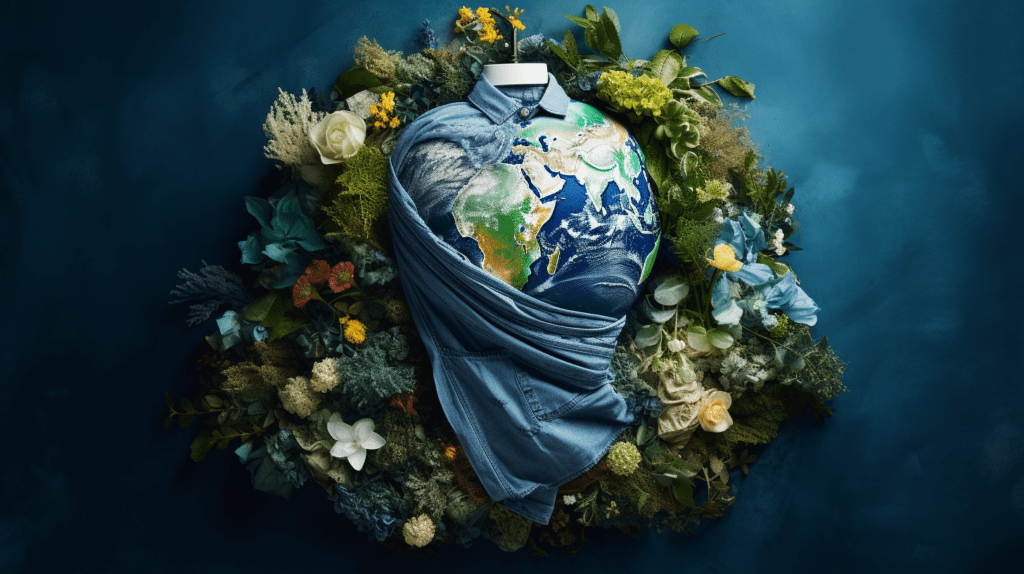
Let’s dive right in and unravel the concept of sustainable fashion. It’s not just a trend, but a movement towards saving our planet.
Sustainable fashion is all about designing, producing, and consuming clothes that respect our environment and the rights of all people involved in the process.
Sustainable materials are at the core of this movement. That means using fabrics made from organic crops, recycled fibers, or innovative textiles engineered to minimize ecological impact. These materials don’t deplete natural resources or contribute to environmental pollution like conventional ones do; they’re better for us and better for our planet.
Fashion longevity is another key aspect of sustainable fashion. Instead of buying cheap garments that wear out quickly and end up in landfill – contributing to 20% of global wastewater – you invest in quality pieces designed to last. This reduces waste, saves resources, and often saves you money over time.
This isn’t an easy path though. Transitioning away from fast-fashion habits requires effort and commitment on your part as a consumer: understanding labels, researching brands’ sustainability credentials, choosing quality over quantity… But remember: every small step contributes towards a huge leap forward for our environment.
The benefits are clear: lower environmental impact; fairer treatment of workers; less waste; more value for your money… And who knows? You might even discover new styles or brands you love along the way!
As we move forward in this discussion on sustainable fashion statistics, let’s shift gears into an equally important component – the growth of the sustainable fashion market.
The Growth of the Sustainable Fashion Market – Sustainable Fashion Statistics

You might find it intriguing to learn that the market for eco-conscious clothing is booming, proving that style and responsibility can indeed walk hand in hand. Market analysis indicates a substantial growth in this sector, with forecasts predicting a rise from $6 billion in 2020 to $8.25 billion by 2023. This escalation is underpinned by an ever-growing consumer perception of their role in fostering sustainability.
The following points provide further evidence of this trend:
- The number of internet searches for ‘sustainable fashion’ has tripled in the last five years.
- According to a Nielsen survey, 66% of global consumers are willing to pay more for sustainable goods.
- A study from Boston Consulting Group found that over half of fashion brands have seen sales improve after introducing measures related to sustainability.
- There’s been a significant increase in second-hand clothing purchases, with resale markets expected to reach $51 billion by 2023.
As you can see, your power as consumers has led brands to significantly rethink their production process and move towards ethical practices.
The shift towards sustainable fashion isn’t just about making better choices; it’s about changing the way we perceive our clothes and understanding the effects they have on our planet. It’s clear that more people than ever before are recognizing these impacts and using their purchasing power positively.
It’s imperative not only to recognize but also to understand how this surge influences other aspects within the industry. Next up, let’s examine how these shifts impact something even bigger – environmental consequences wrought by conventional fashion practices.
Environmental Impact of the Fashion Industry – Sustainable Fashion Statistics
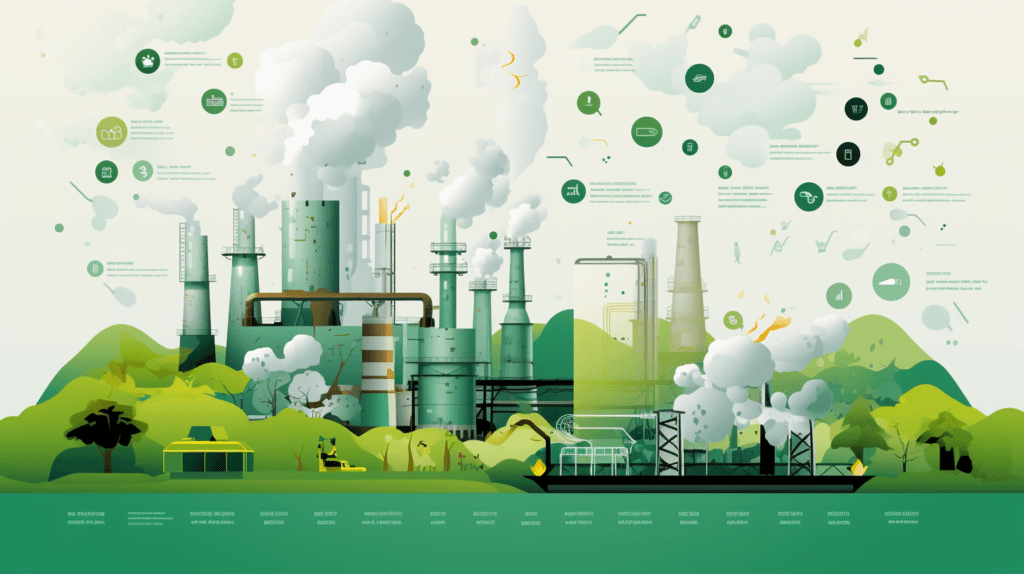
It’s hard to ignore the staggering environmental toll that conventional clothing production takes on our planet. The fashion industry is one of the major polluting industries in the world, contributing around 10% of global greenhouse gas emissions due to its long supply chains and energy-intensive production. This carbon footprint reduction becomes a critical challenge for all those who wish to wield power responsibly.
The manufacturing process alone wreaks havoc on our environment. Vast amounts of water are required for dyeing and finishing processes, often leading to toxic wastewater being dumped into rivers and seas. Synthetic fibers like polyester, nylon, or acrylic take hundreds of years to decompose. Landfills are choked with discarded garments while microplastics from these materials further pollute our oceans.
On top of these issues, there’s greenwashing – a deceptive practice where companies give a false impression of their environmental impact or benefits. Some brands tout their ‘eco-friendly’ collections but continue with unsustainable practices elsewhere in their business operations, misleading consumers who want to make ethical choices.
However, it’s not all doom and gloom. There is growing recognition within the industry about its responsibility and potential for change by adopting sustainable practices such as using organic materials, recycling textiles, reducing waste in production processes, and embracing circular economy models.
As we turn from the environmental aspect towards understanding the social implications associated with this industry; it becomes clear that sustainability isn’t just about saving our planet—it also involves creating fair working conditions and ensuring human rights are respected across every stage of production.
Social Impact of the Fashion Industry – Sustainable Fashion Statistics
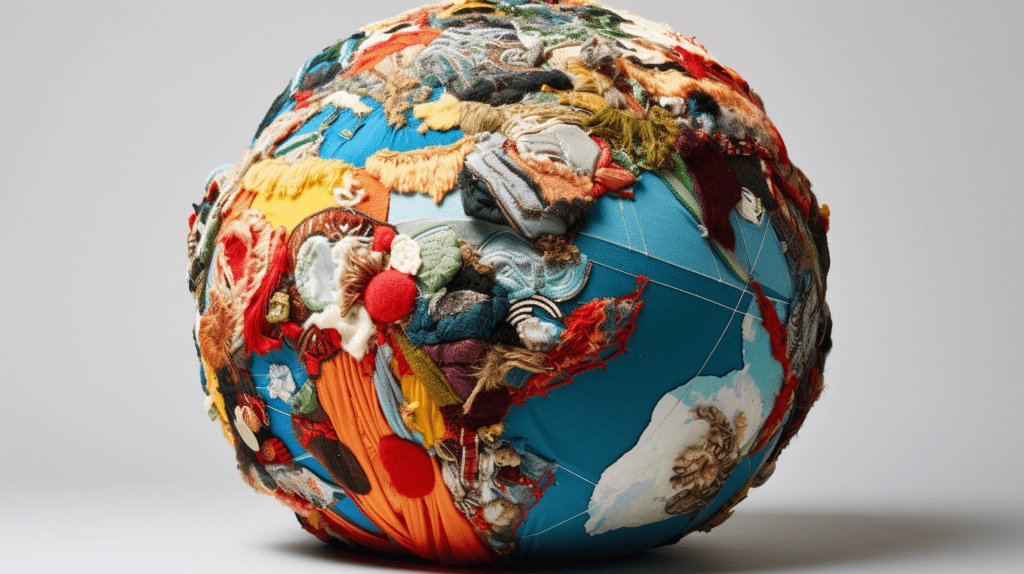
Digging deeper into the rabbit hole of the clothing industry, we find that its social impact isn’t a bed of roses either. It’s not just about environmental degradation, but human lives are at stake too. Labor exploitation is rampant in this sector. From dangerous working conditions to child labor and pitiful wages, fashion’s glittering façade often conceals a harsh reality.
Imagine working 14-16 hour shifts in unsafe factories for wages barely enough to feed your family. Think about children as young as five years old being robbed of their childhoods, forced to work long hours under grueling conditions. This is the brutal truth behind some fast-fashion brands.
Consumer awareness has started changing this narrative though. More and more people are demanding transparency from their favorite labels, holding them accountable for their unethical practices on both environmental and social fronts.
But here’s the thing: consumer pressure alone won’t fix it all overnight. Governments need to impose stricter regulations on companies exploiting workers overseas; international organizations need to ensure better enforcement of labor rights; consumers themselves need to rethink their consumption habits – buy less, choose well, make it last.
Every purchase you make sends a message about what you consider acceptable business conduct—so let your choices reflect your values.
As we delve further into sustainable fashion’s complexities, understanding its challenges becomes crucially important. The journey toward sustainability is filled with obstacles that require innovative solutions and unprecedented collaboration between governments, businesses, and consumers alike.
Challenges in the Sustainable Fashion Industry – Sustainable Fashion Statistics
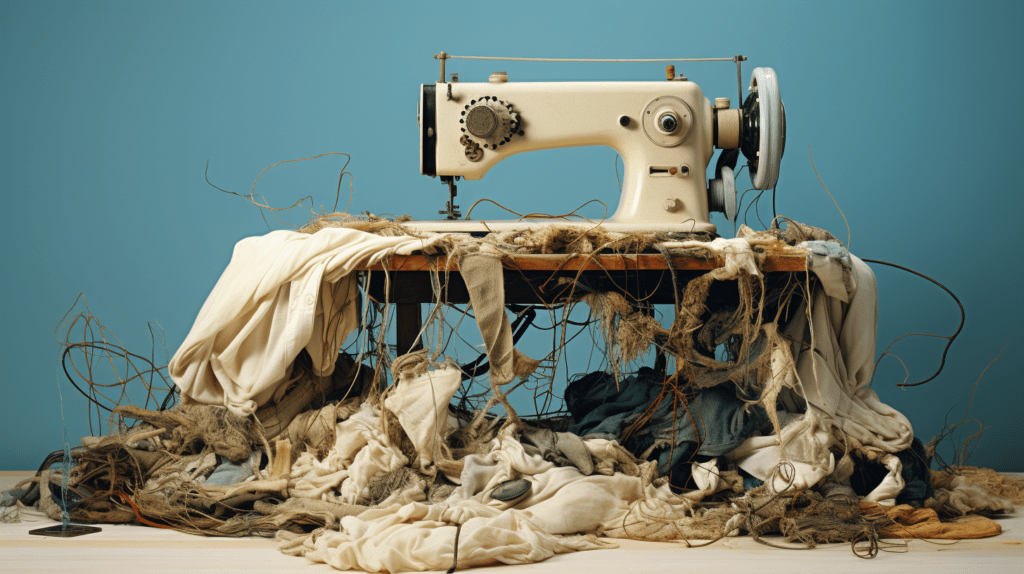
Navigating the sustainable fashion industry isn’t a smooth sail; you’ll encounter significant hurdles, particularly cost and pricing issues. Ethical manufacturing often comes with higher expenses, leading to steeper retail prices that could turn away potential customers.
Additionally, achieving supply chain transparency is crucial yet challenging since it requires extensive scrutiny of every production stage—ensuring all materials are sustainably sourced and workers receive fair wages while maintaining environmental consciousness.
Cost and Pricing Issues
Understanding the cost and pricing issues in sustainable fashion can be quite complex, but you’ll discover they’re integral to the industry’s long-term success.
Higher costs are often associated with ethical production methods, like fair wages or organic materials, creating a price gap between conventional and eco-friendly clothing.
Many consumers perceive sustainable fashion as expensive, which can deter them from making greener choices.
Unscrupulous brands may exploit this consumer perception by deploying greenwashing tactics – misleading claims about their environmental practices to justify higher prices. This manipulation erodes trust and complicates efforts towards genuine sustainability in fashion.
However, these challenges underline the importance of transparency throughout all stages of garment production – a topic we delve into in our next discussion on supply chain transparency.
Supply Chain Transparency
Peeling back the layers of the clothing industry, you’ll find that supply chain transparency isn’t just a trendy buzzword – it’s an age-old concept being dusted off and reimagined for the modern era.
This transparency unveils the full lifecycle of your clothes, from raw material to finished product. The benefits are undeniable: enhanced brand reputation, improved customer loyalty, and increased competitive advantage.
Technological innovations are accelerating this movement towards openness. Tools like blockchain provide real-time tracking capabilities while AI algorithms help identify and correct inefficiencies in production processes. As an informed consumer or business leader, embracing these advancements can equip you with unprecedented authority over your fashion choices.
Moving forward, let’s explore how sustainable fashion practices play a crucial role in creating a more equitable and environmentally-friendly world.
Sustainable Fashion Practices – Sustainable Fashion Statistics
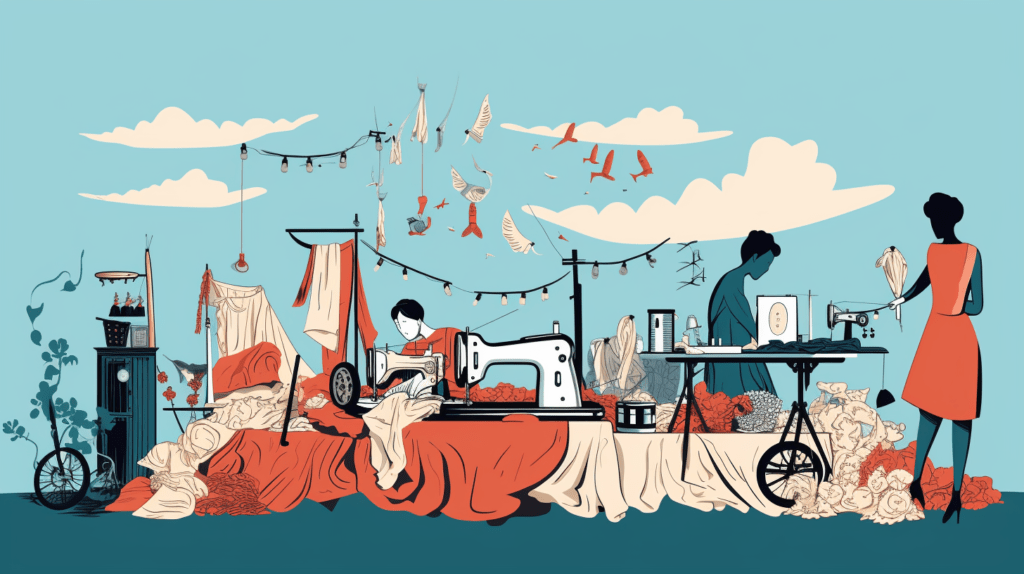
In the vibrant tapestry of global commerce, it’s the threads of sustainable fashion practices that truly stand out, weaving a future where style meets ecological responsibility. As a conscious consumer, you hold power to influence this change. By choosing eco-friendly materials and understanding greenwashing risks, you contribute to a more sustainable world.
Eco-friendly materials are not only gentle on our planet but they also offer quality and longevity that often surpass synthetic alternatives. Organic cotton, hemp, bamboo – these are just a few examples of natural fibers that require less water and harmful pesticides to produce than conventional fabrics. Additionally, recycled materials such as PET plastic have been gaining popularity in the fashion industry due to their low environmental impact.
However, be aware of the potential for greenwashing – deceptive marketing designed to make products seem more environmentally friendly than they really are. Companies might tout ‘eco-friendly’ or ‘sustainable’ labels without any substantial evidence or certified standards backing up these claims. Always research brands and check for transparency in their sustainability practices.
Adopting sustainable fashion isn’t merely about buying better; it’s about making informed choices with an awareness of each product’s lifecycle from raw material extraction through production, distribution, and disposal. It’s about wielding your purchasing power responsibly while demanding accountability from brands you patronize.
Next time you’re considering a purchase, remember: every dollar is a vote for the kind of world you want to live in. Now let’s delve deeper into how some companies are leading by example in sustainability efforts with case studies from forward-thinking fashion brands.
Case Studies of Sustainable Fashion Brands – Sustainable Fashion Statistics

Beneath the glimmering surface of consumerism, there are brands like Patagonia and Eileen Fisher that embody the ethos of a greener tomorrow, turning discarded waste into wearable treasures and setting the benchmark for other players in their trail.
Patagonia is renowned for its brand innovation. The company has taken impressive strides in sustainability by developing materials such as Yulex – a plant-based alternative to neoprene. Plus, they’ve initiated an industry-leading garment repair program to extend product life.
- Yulex: This renewable biorubber sourced from desert trees replaces conventional, petroleum-derived material.
- Garment Repair Program: A bold initiative encouraging consumers to repair rather than discard their worn-out clothes.
Eileen Fisher’s commitment to sustainable fashion is no less commendable; it’s woven into every thread of their business model. Their take-back program ‘Renew,’ aims at creating zero waste by recycling old garments and transforming them according to consumer preferences.
- Renew: An innovative system enabling customers to return used Eileen Fisher items for resale or remanufacturing.
- DesignWork: A creative spin-off transforming damaged pieces returned through Renew into one-of-a-kind artful designs.
The efforts put forward by these brands underline the power of conscious capitalism and inspire countless others towards better practices while underscoring the importance of sustainable choices on our planet’s health.
Both companies present a compelling case study of how proactive measures can be taken within fashion industries to address environmental concerns without sacrificing style or quality – proving that sustainability isn’t just good for business; it’s also what discerning customers demand today – which ultimately drives market trends tomorrow.
Frequently Asked Questions
What are some common misconceptions about sustainable fashion?”
You may believe sustainable fashion is too expensive or lacks style. However, this isn’t true. Brands embracing ethical labor practices often offer competitive pricing and trendy designs.
Also, the usage of upcycled materials doesn’t mean compromised quality; in fact, it leads to unique, durable items.
Another misconception is that sustainable fashion can’t make a difference but remember, your purchasing power can drive significant environmental change. So don’t underestimate the power of your choices!
How does the cost of sustainable fashion items compare to traditional fashion products?”
Despite the affordability perception, sustainable fashion doesn’t always come with a hefty sustainability premium. In fact, 30% of consumers are willing to pay 25% more for eco-friendly clothing. It’s a small price for preserving our planet, isn’t it?
You’re not just buying clothes; you’re investing in a better future. However, depending on the brand and materials used, prices can indeed be higher than traditional fashion products. Yet, this cost difference often reflects ethical production methods and superior quality materials ensuring longevity of wear.
Can sustainable fashion really make a difference in the fight against climate change?”
Absolutely, your choice to support sustainable fashion can combat climate change significantly. By choosing eco-friendly materials, you’re reducing harmful emissions created by traditional production methods.
Plus, fostering consumer awareness about the environmental impact of their purchases empowers others to make greener choices. Your influence holds power.
Each sustainable purchase reduces waste and conserves natural resources while sending a strong message to the industry: You demand better for our planet.
So yes, your commitment truly makes a difference in combating climate change.
What are some sustainable fashion trends to watch out for in the next few years?”
The future of fashion is as green as a just-watered fern. Keep your eyes peeled for Eco Textiles Innovation, harnessing plant-based materials and recycled fibers to reduce environmental harm.
You’ll also see the rise of the Circular Fashion Economy, where clothes are designed to be reused or recycled, not discarded.
These trends aren’t just stylish – they’re game-changers in sustainability. So gear up to strut your stuff in clothing that empowers you and respects our planet.
How can consumers identify truly sustainable fashion brands among the greenwashing?”
To identify genuinely sustainable fashion brands amid greenwashing, you must develop discerning shopping habits.
Understand the importance of sustainable certifications – these labels signify a brand’s commitment to eco-friendly practices.
Use greenwashing identification techniques like researching the company’s supply chain transparency and material sourcing.
Remember, true sustainability extends beyond marketing claims; it entails tangible actions towards environmental stewardship.
Empower yourself with information and make your fashion choices count!
Conclusion
You’ve journeyed through the world of sustainable fashion, now it’s time to make your mark.
Like a tree planted today for future generations, your choices can help shape this industry.
Remember, sustainable fashion isn’t just a trend, it’s a necessity.
So choose wisely and let each purchase count towards reducing environmental impact and promoting social justice. Read more Sustainable Fashion Statistics.

